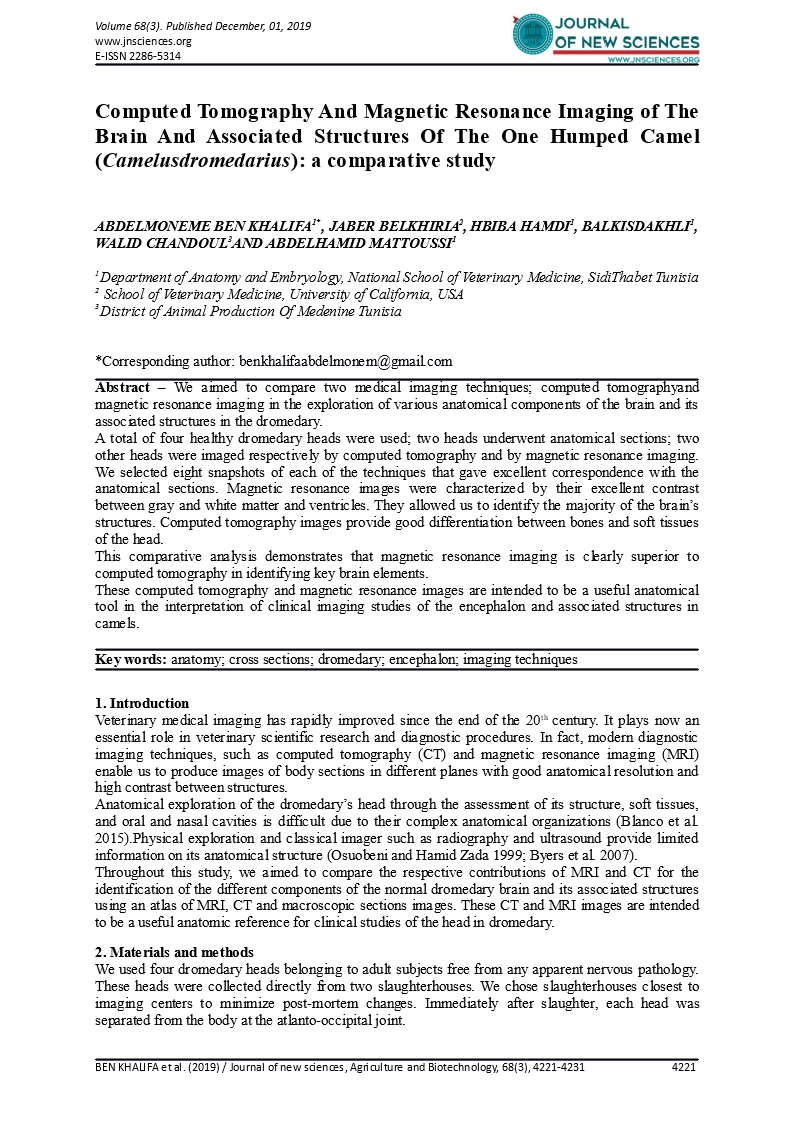- Category: Volume 68
- Hits: 5567
First study on the interest of the determination of the total volatile basic nitrogen in the blue crab (Portunus segnis) in Tunisia

Première étude portant sur l’intérêt du dosage de l’azote basique volatil total chez le crabe bleu (Portunus segnis) en Tunisie
W. OUESLATI1*, S. ZRELLI1, S. BOUCHLAGHEM1, M.A. DHAOU1, B. ABIDI1, M. CHAABOUNI2AND A. ETTRIQUI1
1Laboratory of Food Microbiology, National School of Veterinary Medicine of Sidi Thabet, University Manouba, Tunisia.
2General Directorate of Veterinary Services. AgricultureMinistry, Tunisia.
Abstract - Our study aims to determine the Total Volatile Nitrogen Level (TVNL) in 60 samples of blue crab (30 fresh and 30 frozen) intended for human consumption and to compare them with the regulatory threshold value specific to crustaceans usually harvested in Tunisia especially shrimp or lobster. This comparison aims to verify the highly altered character of the blue crab meat and to specify the most appropriate marketing method for this specie (fresh or frozen). The method used in our study is the micro-diffusion described by CONWAY. Our results show that the difference between the two groups is significant (p <0.05). Indeed, the average of TVNL in fresh crabs is 46.10 mg of nitrogen /100g of soft tissue whereas in frozen crabs it is 28.18 mg of nitrogen /100g of soft tissue. With revere to our results, we can confirm the highly altered character of the crab meat. Although the Total Volatile Nitrogen Level does not provide information on the safety of the product, he remains a good indicator of freshness. To this end, it would be advisable to recommend the destination of blue crabs mainly to the industrial trail to proceed with either freezing or immediate thermal treatment of the products before their marketing.
Keywords: Total Volatile Nitrogen Level - blue crab - freezing.




